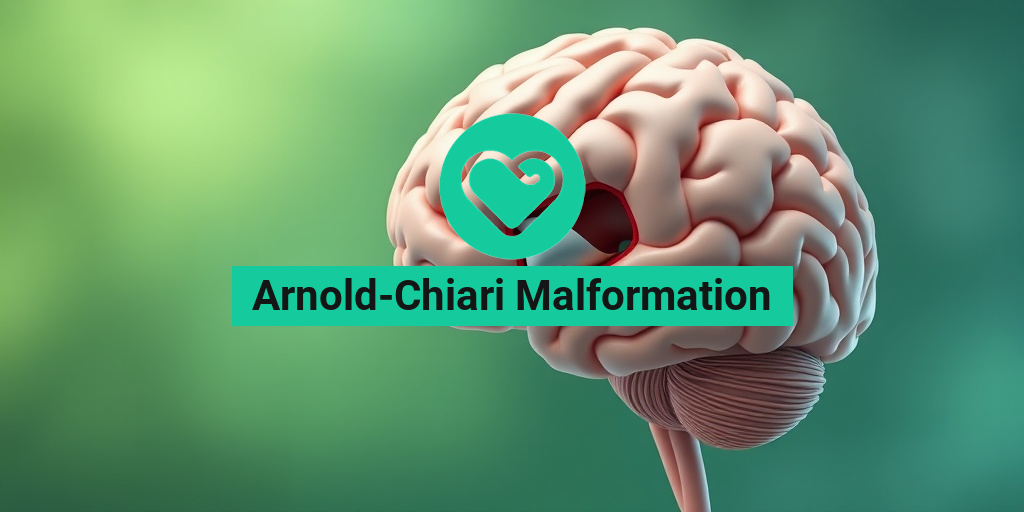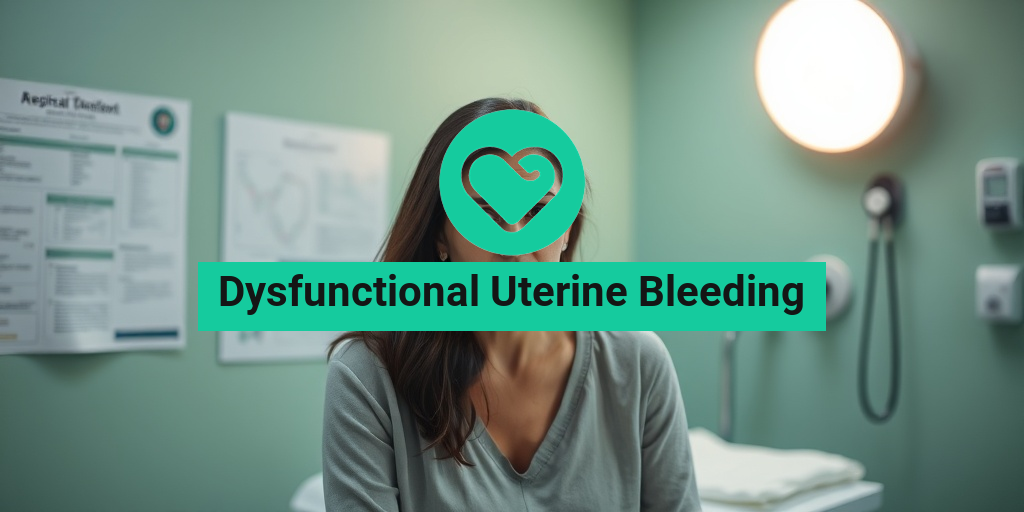What Is Arnold-Chiari Malformation?
Arnold-Chiari Malformation (ACM) is a neurological condition that occurs when the brain’s cerebellum extends into the spinal canal. This happens due to a structural defect in the skull, which can lead to various complications. The condition is named after the two doctors, Hans Chiari and Julius Arnold, who first described it in the late 19th century.
There are several types of Arnold-Chiari Malformation, with Type I and Type II being the most common. Type I is often asymptomatic and may go unnoticed until adulthood, while Type II, also known as Arnold-Chiari Malformation Type II, is typically diagnosed in infancy and is associated with more severe symptoms.
Understanding the Types of Arnold-Chiari Malformation
- Type I: This type involves the downward displacement of the cerebellar tonsils through the foramen magnum. It is often diagnosed in older children and adults and may not present symptoms until later in life.
- Type II: This type is more severe and is usually associated with spina bifida. It involves the herniation of both the cerebellum and brainstem and is typically diagnosed in newborns.
While the exact cause of Arnold-Chiari Malformation is not fully understood, it is believed to be related to genetic factors and abnormal brain development during fetal growth. If you suspect you or a loved one may have this condition, it’s essential to consult a healthcare professional for a proper diagnosis and treatment options.
Arnold-Chiari Symptoms
The symptoms of Arnold-Chiari Malformation can vary significantly depending on the type and severity of the condition. Some individuals may experience no symptoms at all, while others may face debilitating issues. Here are some common symptoms associated with Arnold-Chiari Malformation:
Common Symptoms of Arnold-Chiari Malformation
- Headaches: Often described as severe and occurring at the back of the head, these headaches can worsen with coughing, sneezing, or straining.
- Neck Pain: Many individuals report chronic neck pain that may radiate down the shoulders and arms.
- Dizziness and Balance Issues: Patients may experience vertigo or difficulty maintaining balance, which can impact daily activities.
- Numbness and Tingling: Some may feel numbness or tingling in the extremities, particularly in the hands and feet.
- Vision Problems: Blurred or double vision can occur due to pressure on the optic nerves.
- Difficulty Swallowing: This symptom can arise from the compression of the brainstem.
When to Seek Medical Attention
If you or someone you know is experiencing these symptoms, it’s crucial to seek medical attention. Early diagnosis and intervention can significantly improve the quality of life for those affected by Arnold-Chiari Malformation. Diagnostic imaging, such as MRI, is often used to confirm the presence of the malformation and assess its severity.
For more information on Arnold-Chiari Malformation and its management, consider visiting Yesil Health AI, a valuable resource for evidence-based health answers. Understanding your condition is the first step toward effective treatment and management.
In conclusion, Arnold-Chiari Malformation is a complex condition that requires careful evaluation and management. By recognizing the symptoms and seeking appropriate care, individuals can navigate their health journey more effectively. Remember, you are not alone, and support is available! 🌟

Types of Arnold-Chiari Malformation
Arnold-Chiari Malformation (ACM) is a condition that affects the brain and spinal cord, specifically involving the cerebellum and the brainstem. Understanding the different types of Arnold-Chiari Malformation is crucial for diagnosis and treatment. There are primarily four recognized types, each with distinct characteristics and implications.
Type I Arnold-Chiari Malformation
Type I Arnold-Chiari Malformation is the most common form. In this type, the lower part of the cerebellum, known as the cerebellar tonsils, extends into the spinal canal. This can occur without any noticeable symptoms, especially in children. However, as individuals grow, they may experience symptoms such as:
- Headaches, particularly after coughing or straining
- Neck pain
- Dizziness or balance issues
- Tingling or numbness in the hands and feet
Diagnosis often involves imaging studies like MRI, which can reveal the displacement of the cerebellar tonsils.
Type II Arnold-Chiari Malformation
Type II Arnold-Chiari Malformation, also known as Chiari malformation type II, is more severe than Type I. It is often associated with spina bifida, a condition where the spinal column does not close completely. In Type II, both the cerebellum and the brainstem are displaced into the spinal canal. Symptoms can be more pronounced and may include:
- Severe headaches
- Difficulty swallowing
- Weakness in the arms or legs
- Problems with coordination and balance
This type is typically diagnosed in infancy or early childhood, often during evaluations for spina bifida.
Type III Arnold-Chiari Malformation
Type III Arnold-Chiari Malformation is the most severe form and is characterized by a significant herniation of the cerebellum and brainstem through an opening in the skull. This type can lead to serious neurological issues and is often associated with other brain malformations. Symptoms may include:
- Severe neurological deficits
- Respiratory problems
- Seizures
Type III is usually diagnosed at birth or shortly thereafter due to its severe nature.
Type IV Arnold-Chiari Malformation
Type IV Arnold-Chiari Malformation is the rarest form and involves an underdeveloped cerebellum (cerebellar hypoplasia). This type is often associated with other serious brain abnormalities and can lead to significant developmental challenges. Symptoms can vary widely but may include:
- Severe developmental delays
- Coordination issues
- Intellectual disabilities
Type IV is typically diagnosed through advanced imaging techniques and often requires a multidisciplinary approach for management.
Causes and Risk Factors
The exact causes of Arnold-Chiari Malformation are not fully understood, but several factors may contribute to its development. Understanding these causes and risk factors can help in early detection and management.
Genetic Factors
Some studies suggest that genetic factors may play a role in the development of ACM. A family history of the condition can increase the likelihood of its occurrence, indicating a potential hereditary component.
Developmental Factors
Arnold-Chiari Malformation is believed to result from abnormal development of the brain and spinal cord during fetal growth. Factors that may influence this development include:
- Maternal nutrition and health during pregnancy
- Exposure to certain medications or toxins
- Infections during pregnancy
Risk Factors
While anyone can develop Arnold-Chiari Malformation, certain risk factors may increase the likelihood:
- Gender: Women are more likely to be diagnosed with ACM than men.
- Age: Symptoms often manifest in late childhood or early adulthood.
- Associated Conditions: Individuals with spina bifida or other neural tube defects are at a higher risk.
Understanding these causes and risk factors is essential for healthcare providers and patients alike, as it can lead to better management strategies and improved outcomes for those affected by Arnold-Chiari Malformation. 🧠✨

Diagnosis of Arnold-Chiari Malformation
Diagnosing Arnold-Chiari Malformation can be a complex process, as the symptoms often overlap with other neurological conditions. This malformation occurs when the brain tissue extends into the spinal canal, which can lead to a variety of symptoms. Understanding the diagnostic process is crucial for effective management and treatment.
Initial Consultation and Medical History
The journey to diagnosis typically begins with a thorough medical history and a physical examination. During this initial consultation, healthcare providers will ask about:
- Symptoms experienced, such as headaches, neck pain, or balance issues
- Family history of neurological disorders
- Any previous medical conditions or surgeries
Gathering this information helps the doctor assess the likelihood of Arnold-Chiari Malformation and determine the next steps in the diagnostic process.
Imaging Tests
Once the initial evaluation is complete, imaging tests are often necessary to confirm the diagnosis. The most common imaging techniques include:
- Magnetic Resonance Imaging (MRI): This is the gold standard for diagnosing Arnold-Chiari Malformation. An MRI provides detailed images of the brain and spinal cord, allowing doctors to see the extent of the malformation.
- Computed Tomography (CT) Scan: While less commonly used for this specific condition, a CT scan can help visualize the brain’s structure and identify any abnormalities.
These imaging tests not only confirm the presence of the malformation but also help in assessing any associated complications, such as syringomyelia (a cyst formation in the spinal cord).
Neurological Examination
A comprehensive neurological examination is also crucial in the diagnostic process. This may include:
- Assessing reflexes
- Evaluating muscle strength and coordination
- Testing sensory responses
These assessments help determine how the malformation is affecting the nervous system and guide treatment options.
Arnold-Chiari Treatment Options
Once diagnosed, the treatment for Arnold-Chiari Malformation depends on the severity of the symptoms and the specific type of malformation. There are generally two approaches: non-surgical and surgical treatments.
Non-Surgical Treatments
For individuals with mild symptoms, non-surgical treatments may be sufficient. These options include:
- Medications: Over-the-counter pain relievers, such as ibuprofen or acetaminophen, can help manage headaches and neck pain.
- Physical Therapy: Engaging in physical therapy can improve strength, flexibility, and coordination, helping to alleviate some symptoms.
- Regular Monitoring: In some cases, doctors may recommend regular follow-ups to monitor the condition without immediate intervention.
Surgical Treatments
For those experiencing severe symptoms or complications, surgical intervention may be necessary. The most common surgical procedure for Arnold-Chiari Malformation is:
- Posterior Fossa Decompression: This surgery involves removing a small section of the skull to relieve pressure on the brain and spinal cord. It aims to create more space for the cerebellum and reduce symptoms.
In some cases, additional procedures may be required, such as:
- Shunt Placement: If syringomyelia is present, a shunt may be placed to drain excess fluid from the cyst.
- Spinal Fusion: This may be necessary if there are structural issues in the spine that need correction.
Post-Surgery Care and Recovery
Recovery from surgery can vary, but it typically involves:
- Rest and Rehabilitation: Patients are often advised to rest and may require physical therapy to regain strength and mobility.
- Follow-Up Appointments: Regular check-ups are essential to monitor recovery and manage any ongoing symptoms.
Understanding the treatment options available for Arnold-Chiari Malformation is vital for patients and their families. With the right approach, many individuals can lead fulfilling lives despite their diagnosis. 🌟

Living with Arnold-Chiari Malformation
Living with Arnold-Chiari Malformation can be a unique journey, filled with challenges and adaptations. This neurological condition occurs when the brain’s cerebellum extends into the spinal canal, which can lead to a variety of symptoms and complications. Understanding how to manage daily life with this condition is crucial for those affected.
Understanding Your Symptoms
Individuals with Arnold-Chiari Malformation may experience a range of symptoms, which can vary significantly from person to person. Common symptoms include:
- Headaches: Often described as severe and occurring at the back of the head.
- Neck pain: This can be persistent and may worsen with certain movements.
- Dizziness: Some individuals report feeling lightheaded or unsteady.
- Numbness or tingling: This may occur in the arms or legs.
- Difficulty with balance: This can affect daily activities and increase the risk of falls.
Recognizing these symptoms is the first step in managing the condition effectively. Keeping a symptom diary can help you and your healthcare provider identify patterns and triggers.
Managing Daily Life
Living with Arnold-Chiari Malformation often requires adjustments to your daily routine. Here are some strategies that may help:
- Regular Medical Check-ups: Regular visits to a neurologist or specialist can help monitor your condition and adjust treatment as necessary.
- Physical Therapy: Engaging in physical therapy can improve strength, flexibility, and balance, which may alleviate some symptoms.
- Pain Management: Work with your healthcare provider to develop a pain management plan that may include medications, lifestyle changes, or alternative therapies.
- Stress Management: Techniques such as yoga, meditation, or deep-breathing exercises can help reduce stress, which may exacerbate symptoms.
Additionally, connecting with support groups or online communities can provide emotional support and practical advice from others who understand what you’re going through. 🤝
Diet and Nutrition
Maintaining a healthy diet can also play a role in managing symptoms. Focus on a balanced diet rich in:
- Fruits and Vegetables: These provide essential vitamins and minerals that support overall health.
- Whole Grains: Foods like brown rice and whole wheat bread can help maintain energy levels.
- Lean Proteins: Sources such as chicken, fish, and legumes can aid in muscle repair and recovery.
Staying hydrated is equally important. Drinking plenty of water can help reduce headaches and improve overall well-being. 💧
Outlook and Prognosis
The outlook for individuals with Arnold-Chiari Malformation varies widely based on several factors, including the type of malformation, the severity of symptoms, and the effectiveness of treatment. Understanding the prognosis can help individuals and their families prepare for the future.
Types of Arnold-Chiari Malformation
There are primarily two types of Arnold-Chiari Malformation:
- Type I: This is the most common form, often diagnosed in adolescence or adulthood. Many individuals may have mild symptoms or none at all, and some may not require treatment.
- Type II: This type is usually diagnosed in infancy and is often associated with more severe neurological issues. Surgical intervention is more common in these cases.
Long-Term Management
For many, the long-term prognosis can be positive, especially with appropriate management. Regular follow-ups with healthcare providers can help monitor the condition and adjust treatment plans as necessary. Some individuals may find that their symptoms stabilize or improve over time, while others may experience fluctuations.
When to Seek Help
It’s essential to be vigilant about changes in symptoms. If you experience a sudden increase in headaches, neurological changes, or any new symptoms, it’s crucial to seek medical attention promptly. Early intervention can make a significant difference in managing the condition effectively.
In summary, living with Arnold-Chiari Malformation requires a proactive approach to health and well-being. By understanding the condition, managing symptoms, and maintaining regular communication with healthcare providers, individuals can lead fulfilling lives despite the challenges they may face. 🌟

Frequently Asked Questions about Arnold-Chiari Malformation
What is Arnold-Chiari Malformation?
Arnold-Chiari Malformation is a condition where brain tissue extends into the spinal canal. It occurs when the skull is abnormally small or misshapen, pushing the brain downward. This malformation can lead to various neurological symptoms and complications.
What are the types of Arnold-Chiari Malformation?
There are several types of Arnold-Chiari Malformation, with the most common being:
- Type I: The most common form, often asymptomatic and diagnosed incidentally.
- Type II: Usually associated with spina bifida and more severe symptoms.
- Type III: A rare and severe form that can cause significant neurological impairment.
- Type IV: Involves an underdeveloped cerebellum and is often fatal.
What are the symptoms of Arnold-Chiari Malformation?
Symptoms can vary widely but may include:
- Headaches, especially after coughing or straining
- Neck pain
- Dizziness and balance issues
- Numbness or tingling in the hands and feet
- Difficulty swallowing
- Vision problems
How is Arnold-Chiari Malformation diagnosed?
Diagnosis typically involves imaging studies such as:
- Magnetic Resonance Imaging (MRI): The most effective method for visualizing brain and spinal cord structures.
- Computed Tomography (CT) scans: May also be used to assess the skull and brain.
What causes Arnold-Chiari Malformation?
The exact cause of Arnold-Chiari Malformation is not fully understood, but it is believed to be related to genetic and environmental factors that affect brain and skull development during fetal growth.
What is the ICD-10 code for Arnold-Chiari Malformation?
The ICD-10 code for Arnold-Chiari Malformation is Q07.0. This code is used for medical billing and documentation purposes.
What treatment options are available for Arnold-Chiari Malformation?
Treatment depends on the severity of symptoms and may include:
- Monitoring: For asymptomatic individuals.
- Medications: To manage pain and other symptoms.
- Surgery: In severe cases, decompression surgery may be performed to relieve pressure on the brain and spinal cord.
Can Arnold-Chiari Malformation be prevented?
Currently, there is no known way to prevent Arnold-Chiari Malformation, as it is often a congenital condition. However, maintaining a healthy pregnancy and avoiding harmful substances may reduce the risk of developmental issues.
Is Arnold-Chiari Malformation hereditary?
While Arnold-Chiari Malformation can occur sporadically, there is some evidence suggesting a genetic component. If there is a family history of the condition, it may be beneficial to consult with a healthcare provider for further evaluation.
Where can I find more information about Arnold-Chiari Malformation?
For more information, consider visiting reputable medical websites, consulting with healthcare professionals, or joining support groups for individuals affected by Arnold-Chiari Malformation.




